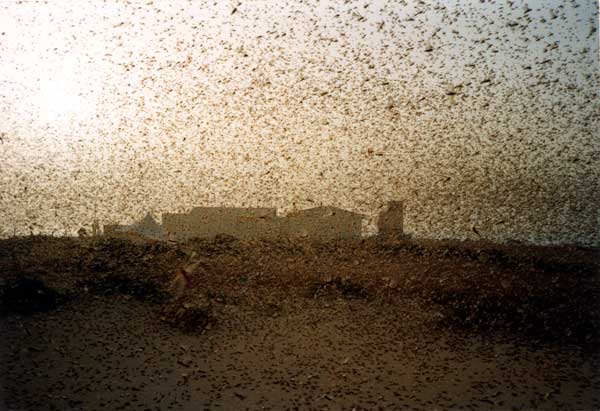Climate Change and Desert Locust
Preventing Desert Locust plagues
Desert Locust plagues can develop in a recession area that extends from West Africa to India; an area equivalent to about 16 million square km. Scattered solitarious locusts breed on winter, spring and summer rains that fall sporadically in this area. If heavy rains fall in successive seasonal breeding areas, the locusts will gregarize and, unless prevented by control, drought or migration to unsuitable habitats, plagues can form.

The benefits of preventive control
One of the primary benefits of Desert Locust preventive control, that is early warning and early reaction, is a reduction in the extent of plagues in many major agriculture areas. This is depicted on the map showing Desert Locust swarms in 1930-64 (green) and in 1965-99 (red).
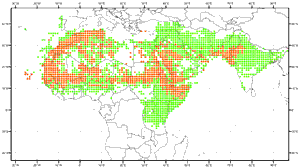
Desert Locust plagues in the past
There have been numerous plagues (orange bars) in the past with calm periods (recessions) in between (gray bars). Since the 1960s, the frequency and duration of Desert Locust plagues have declined probably due to preventive control. Will climate changes affect these hard won benefits?
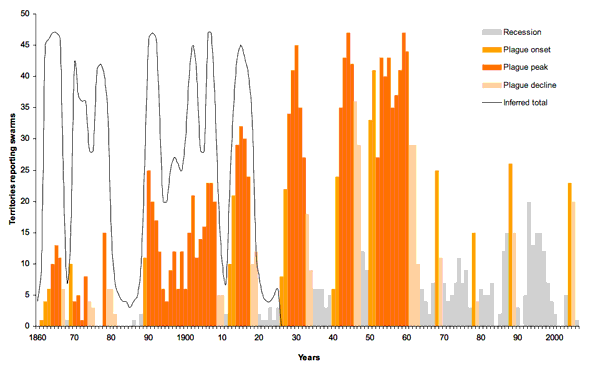
Locusts and the environment
Desert Locust are closely associated with rainfall, winds and vegetation. Rain provides moist soil for laying as eggs need to absorb water. Rains also allow vegetation to grow which locusts need for food and shelter.
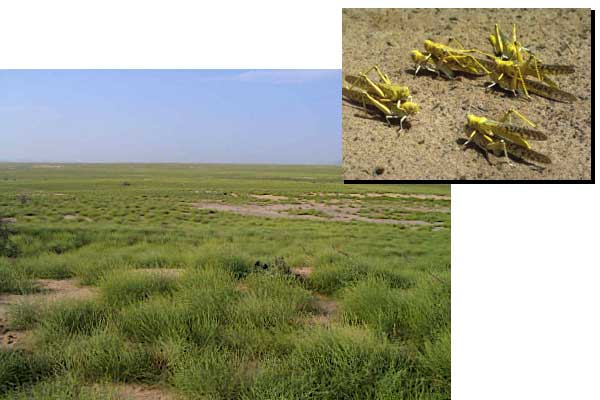
The impact of changes in rainfall
Climate change experts predict more extreme weather including droughts, floods and cyclones. Whereas locust numbers decrease during droughts, locust outbreaks often follow floods and cyclones. If not controlled, these outbreaks can lead to plagues.
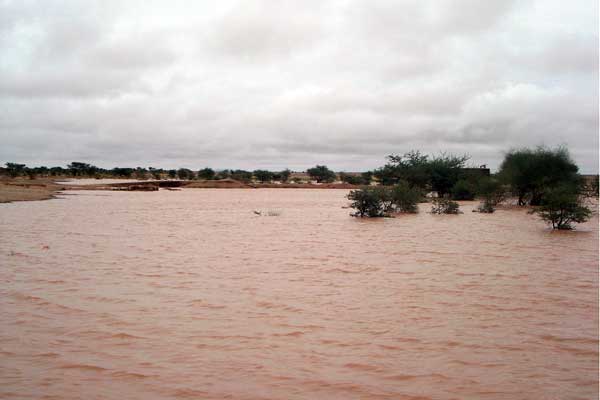
The effects of increased rain in West Africa (2003)
Above-average rainfall led to the development of green vegetation in the summer of 2003 (red line) some 100 km or more further north in the Sahel of West Africa than in 2002 (blue line).
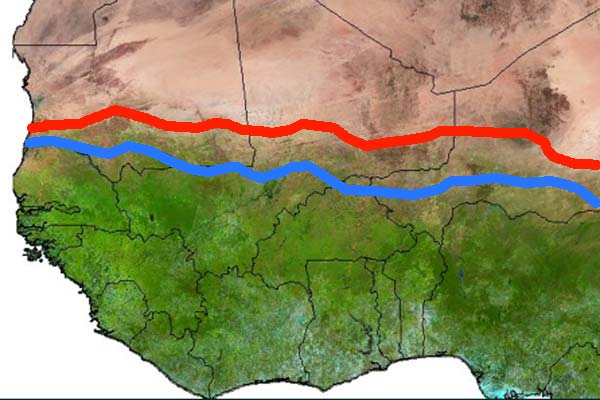
The impact of increased temperatures
Climate change experts also predict that temperatures will continue to rise. Temperature governs the speed of locust development. Will increased temperatures associated with climate change shorten both the long maturation and incubation periods during the spring in NW Africa, the Arabian Peninsula and SW Asia? If so, will the number of locust generations in a year rise in these regions?
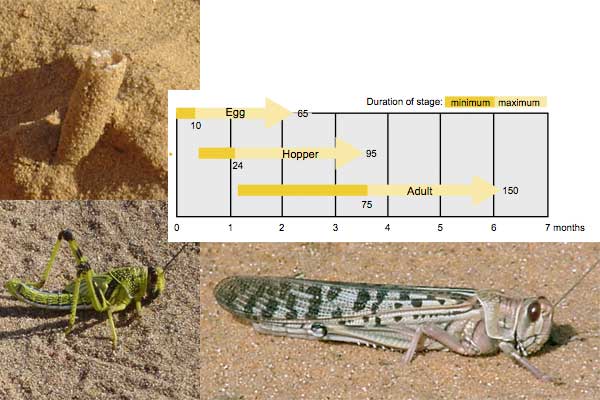
Desert Locust will adapt to climate change
Desert Locusts probably evolved in the oligocene or miocene periods, and have survived many severe climate changes in the last 30 million years. Regional climate change scenarios are often for 2080-2100; meanwhile, there are signs that more extreme weather may be occurring now. [locusts on an ancient grave, Sakkara, Egypt 2400BC]
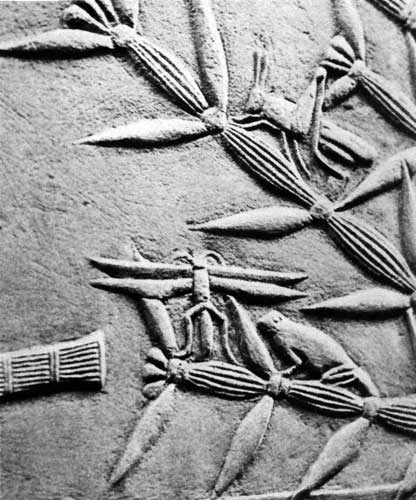
Plague prevention during climate change
Investigations and research need to continue to analyse current and past survey data in order to identify changes in: (1) rainfall patterns, (2) locust development periods, and (3) outbreak frequency. Seasonal work patterns associated with plague prevention may need to be adapted accordingly.
